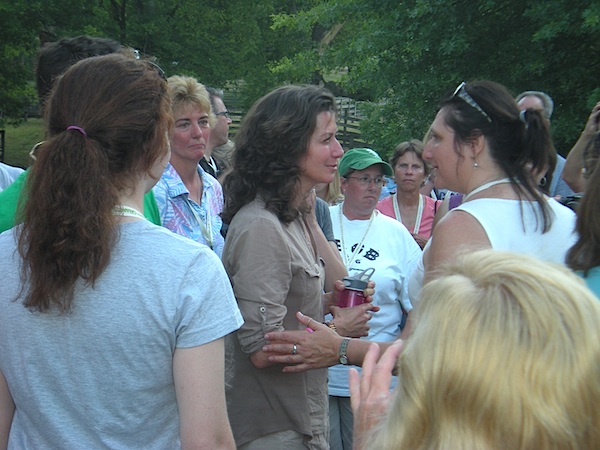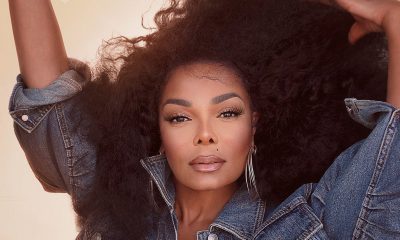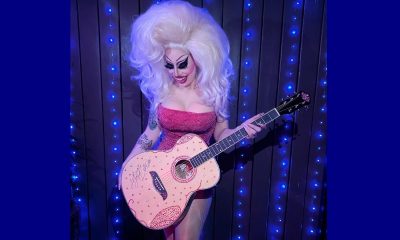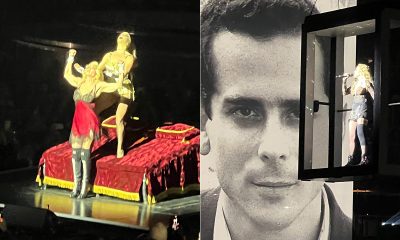Arts & Entertainment
Gays prominent at Amy Grant’s Nashville weekend
Gathering reminds how much is missing of singer’s touring history
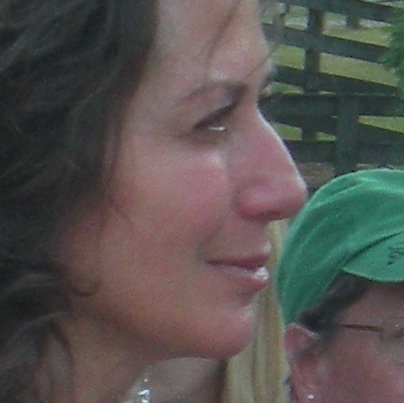
Weekend before last, a friend and I made a road trip to Nashville to spend a weekend with Amy Grant and 550 of her nearest and dearest. It was a great weekend — $50,000 was raised for various charities Grant supports, the music performed (almost all requests) was a long-time fan’s dream come true and the Gospel Music Hall of Famer and six-time Grammy winner was as accessible and approachable as was realistically possible considering those attending were among the all-time die hards, a few of whom had vulture-like tendencies everytime Grant appeared.
That gays — and at least one lesbian couple and one trans woman — were among the group was hardly surprising. We’ve been among the most vocal in her fan circles for years. Most non-church folks remember Grant only for a few early ’90s hits (“Baby Baby,” “Every Heartbeat”). Though her catalog has aged well, she’s not deemed terribly high on the hip quotient. Even one of the charity recipients said, “Amy Grant — isn’t she Vince Gill’s wife?”
But for a generation of gay men who grew up in Baptist and Evangelical churches in the ’80s, Grant was so much more than that and, no exaggeration, a lifeline. Contemporary Christian Music had its own parallel universe divas — Sandi Patty, Twila Paris, Margaret Becker, et. al. — and Grant, who in many ways had and maintains a very non-diva-esque persona, was queen of the lot. But that’s just one of the ironies of Grant’s career — she also stumbled into the music biz without really trying, has always been upfront about her modest pipes (she’s really a better songwriter than singer) and, despite a bounty of RIAA Platinum albums, never fully fit in in either the gospel or pop establishments.
Those of us in fan circles have discussed ad nauseum Grant’s public handling of her gay fans (or lack thereof). She’s warm, friendly, gamely poses for photos with male couples, etc., but is careful never to state her personal feelings one way or the other. One understands to a degree — she’s in a no-win situation. As was obvious from the attendees last weekend, most of Grant’s fans are Gen. X and post-Boomer soccer moms from the Bible belt. We all seem to mix pretty well. I hope they feel the same. But Grant would alienate a large part of her fan base if she were to come out one way or the other on her feelings of the Bible and homosexuality. There’s a clamoring among gay fans, of course, for her to be more unequivocal. Nobody’s expecting Lady Gaga-caliber activism, but heck, even the late Tammy Faye Bakker Messner was more openly gay accepting than Grant. Perhaps, though, having lost everything already, Tammy Faye had nothing left to lose (Tammy Faye even joined us at Capital Pride about 10 years ago …. Ahhhh, Tammy Faye, how I miss thee).
Grant does occasionally take risks — it will undoubtedly seem like a non-issue to many, but monogrammed bottles of Jack Daniels with Amy Grant nameplates were sold for $100 a pop at her farm, which she opened to guests on June 23. It all went to charity but the irony was delicious — I’m old enough to recall the outraged reactions in the ’80s when Grant said in an early interview that she occasionally imbibed. Folks at my parents’ church were apoplectic.
It’s never been a big deal to me, either the booze or the gay stuff. Some fans, so eager to glean the slightest glimmer of acceptance (are we really that desperate for validation?), latched on to an off-the-cuff remark she made during the weekend when a guest southern gospel singer, telling a story about a drag queen who’d parodied his wife, said his group had a large gay following (Grant acknowledged she did as well).
The draws for me have always been Grant’s music and personality. There’s a freshness, a buoyancy, to her music that, though it sounds stylistically dated, never really goes away. It goes back to the first album — lyrics and energetic Brown Bannister production around lines like, “The sun woke me up real early it’s a beautiful morn/so I’m goin’ down to the river to be reborn” still resonate 35 years after they were put down on wax. My parents, both products of stodgy, old school mainline and Roman Catholic versions of Christianity, had early-’70s born again experiences and for them and their fellow Boomers, there was a parallel Jesus music/born again fever sweeping the country the same time Stonewall and the modern gay rights movement was kicking off. This is no coincidence — hippie ideals weren’t sustainable, of course, but what they did bring us was a shucking off of the ’50s mindset on all kinds of issues. In terms of gay stuff, faith, and a whole lot more, this was not your parents’ (my grandparents’) America. Grant got in on sort of the tail end of that but shot off into the stratosphere in the early ’80s. By then, things had calmed down and she became the voice of a churchgoing, Bible Belt generation with songs like “El Shaddai,” “Sing Your Praise to the Lord” and “Thy Word.”
Bored eventually with straight-up gospel, she gradually started flirting with pop music and following a hit No. 1 duet with Peter Cetera in ’87 (“Next Time I Fall”), she had a full-on hit pop album of her own by 1991 (“Heart in Motion”). But she never fully went one way or the other. At the point in which an all-out pop album would have made the most sense — just following the Cetera hit — she went the other direction and made an impressionistic gospel album, “Lead Me On.” Its singles tanked on pop radio but it went onto become her critical peak and has been called (by CCM magazine, et. al.) the best gospel album of all time. Likewise, when “Heart in Motion” was going through the roof a few years later, Grant was careful to let people know she hadn’t sold out as she was so often accused of doing by the hardliners (she gets bonus points, in my opinion, for having been condemned by Jimmy Swaggart). The album closes with the all-out praise song “Hope Set High” (“if there’s anything good that happens in life, it’s from Jesus”), a song she memorably performed last weekend.
So were the young gays of the era, hopelessly stranded in the Bible Belt with no hope of escape until college, just latching on to the closest thing we could get to a lighthouse in Grant? Not really — it’s deeper than that. I and many I know were also listening to Madonna, Janet Jackson, Cyndi Lauper and Tina Turner (we all figured “Private Dancer” was her first album) back then too, even if we had to sneak their tapes into the house. It’s hard to know if Grant meant any of this intentionally or if it was her own way of sneaking in some stuff past the gatekeepers, but there are glimmers of gay hope dotted all throughout her discography from as early as 1980 when she sang the lyrics her then-husband, Gary Chapman, had written (“all I ever have to be is what you made me/any more or less would be a step out of your plan”) to her own lyrics just a year later (“being this person inside of me/unafraid of being me/no more faces to hide behind …/even if I am the only one who wants to fly”) and even much later, with the 2003 song “Out in the Open” (“there is no jury, there is no judge/ready and waiting are the steady arms of love”). If it all sounds vague or like searching for something that’s not there, keep in mind, more often than not, Grant was nearly as subtle with her Christian references. It seems laughable now, but people used to parse her lyric sheets and balk at how few references there were to Jesus and/or God anytime she had a new album out, noting how increasingly infrequent they were becoming.
I don’t particularly care what Grant’s personal views are on homosexuality. Sure, it would be great if she would at least take the Dolly Parton approach to embracing/acknowledging us. Lord knows we need all the help we can get on the LGBT rights front where each step ahead feels like pulling teeth. But conversely, what does it say about us as fans if we need some sort of acknowledgement from our favorite singers? I do get it — when you’ve invested emotionally and financially in a singer/brand who’s meant so much to you, especially during the raw, painful formative years (and let me tell you, it’s lonely being the only gay fish in an evangelical, Bible Belt pond when you’re 13), it means a lot to know those you admire are on board. But as adults, ultimately that need for validation says more about our own desperation than anything it might suggest about Grant. For the record, Sandi Patty, perhaps my other all-time favorite singer, is just as evasive. There are quietly gay people in her camp and she once told a group of gay fans who hosted a tribute post-show event for her in New York that she was “feeling the love,” but she, too, stops short of any condoning type-of statement. They’ll both talk to any small-town newspaper in which they happen to have an upcoming show, yet my Blade interview requests go curiously unacknowledged. Perhaps they feel they’ve already rocked their Christian fan bases enough having spent the last 10-15 years rebuilding after each going through controversial divorces (Sandi’s first husband, John Helvering, and Amy’s, Gary Chapman, were huge parts of their touring entourages in the ’80s; John ran sound for Sandi; Gary was Amy’s band director on several of her biggest tours).
My ultimate frustration with loving these singers falls into a whole other category entirely — to my endless chagrin, whole chapters of their touring history are missing in action. Sure, I love mainstream pop and rock too, but if you’re a Stevie Nicks fan or, merciful heavens, a Tori Amos fan, and you’re willing to look in some, ahem, unofficial places, you can find audio circulating of practically every show they’ve ever done. Same with the Stones, Bob Dylan, Springsteen — all the big dogs you’d expect. Other acts, like Pearl Jam, have recognized the insatiable appetites of their staunchest legions, and have released “official” bootlegs, manna from heaven for those who’ve worn out the studio recordings and spent many hard-earned dollars following them around. Even Cyndi Lauper, who traditionally has varied up her live show way more than, say Madonna or Janet, has a surprisingly rich bevy of fan-generated recordings out there. Different artists have different feelings on this sort of thing (the Grateful Dead famously encouraged it), but the sticking point for many is that it’s OK as long as you don’t attempt to profit off it.
Amy and Sandi both fall into that category — Sandi didn’t even bat an eye when people plunked down camcorders on mini-tripods at a Nashville event she hosted last year — and yet huge swaths of their concert-giving history are unaccounted for. And I’m not talking about obscure stuff, either — tours like Amy’s “Heart in Motion Tour” and Sandi’s “Another Time Another Place Tour” were mammoth operations playing arenas for months on end all around the country 20 years ago. On one hand, it’s not terribly shocking — these are not singers, historically, with wildly inventive bands who shook up their set lists drastically from night to night. However, when 25 years has gone by and you can’t even find a complete set list and no official live album or VHS concert tape was ever released, this brings its own level of frustration. These people have spent half their lives on the road, yet there’s precious little evidence that they’ve even left their living rooms.
Just for the record, my holy grails in this vein are — Sandi: anything pre-’83, the ’84-’85 “From the Heart Tour” (her first cross-country jaunt), the ’91-’92 “Another Time Another Place Tour” or the ’98 “Artist of My Soul”-era dates. For Amy: always wondered how complete the “Age to Age” concert video is — at 90 minutes including Gary’s set, one imagines a few numbers might have ended up on the cutting room floor. Only a handful of individual numbers have ever surfaced from the 18-month-long “Unguarded Tour” — surely somebody taped this at least one night (soundboard tapes were reportedly made each night but have never surfaced in fan circles). Also curiously missing from trading circles is her biggest tour ever — the “Heart in Motion Tour.” Audio has been known to exist, but nobody I’ve ever talked to claims to have it. I’m totally down for a no-profit swap if anybody has any of this stuff.
If there’s an upside to all this, it’s that Amy and Sandi are still out there and active. Patty records regularly and has released an album almost every year of the last decade. Grant only records here and there (she’s reportedly working on a new album), but she tours almost constantly. It’s a blessing I don’t take for granted as a few of my other favorites from the era — Paris and Becker — have, with precious few exceptions, completely stopped recording and touring.
Time to move on and get a life? Yeah, probably, but isn’t it uncanny how deep the nerve is that takes you back to the first music you ever discovered on your own? For me, it defies explanation. And so the quest/obsession continues. I’m even — don’t laugh — planning to check out a D.C. Women of Faith conference in August. Ordinarily I’d rather sit home and watch paint dry (I’ve left much of that theology long behind), but — holy of holies — Amy and Sandi are BOTH scheduled to be there!
Movies
After 25 years, a forgotten queer classic reemerges in 4K glory
Screwball rom-com ‘I Think I Do’ finds new appreciation
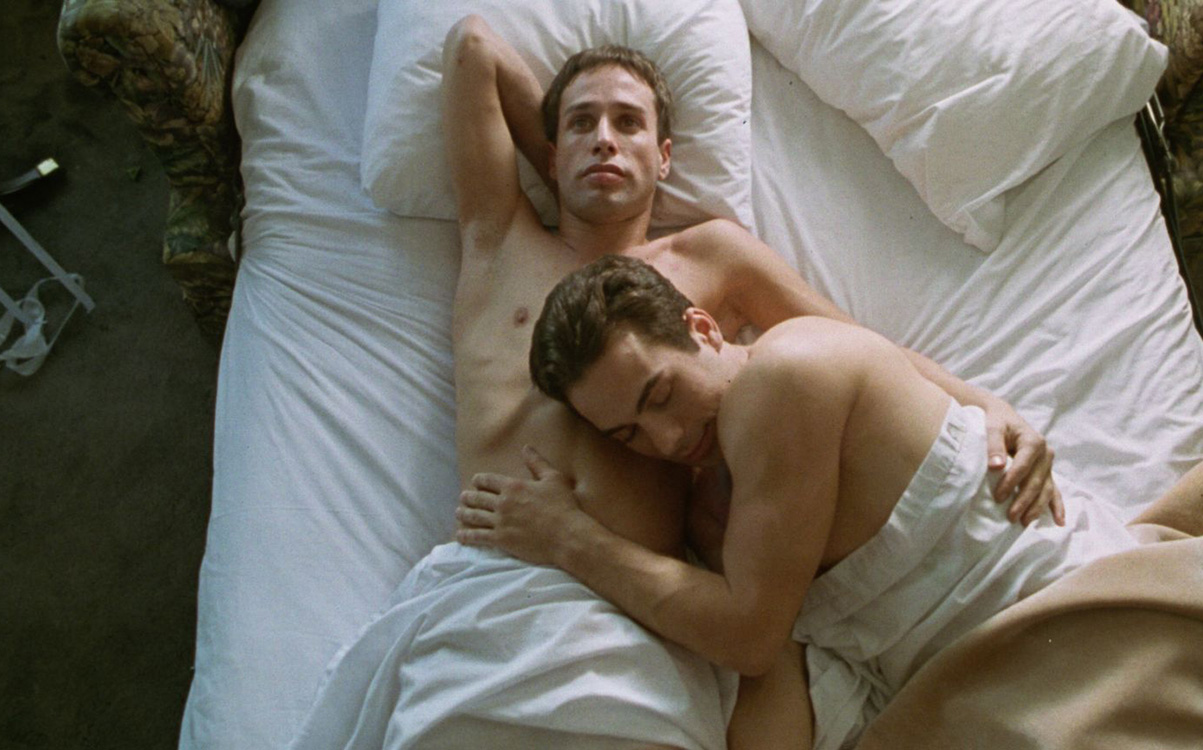
In 2024, with queer-themed entertainment available on demand via any number of streaming services, it’s sometimes easy to forget that such content was once very hard to find.
It wasn’t all that long ago, really. Even in the post-Stonewall ‘70s and ‘80s, movies or shows – especially those in the mainstream – that dared to feature queer characters, much less tell their stories, were branded from the outset as “controversial.” It has been a difficult, winding road to bring on-screen queer storytelling into the light of day – despite the outrage and protest from bigots that, depressingly, still continues to rear its ugly head against any effort to normalize queer existence in the wider culture.
There’s still a long way to go, of course, but it’s important to acknowledge how far we’ve come – and to recognize the efforts of those who have fought against the tide to pave the way. After all, progress doesn’t happen in a vacuum, and if not for the queer artists who have hustled to bring their projects to fruition over the years, we would still be getting queer-coded characters as comedy relief or tragic victims from an industry bent on protecting its bottom line by playing to the middle, instead of the (mostly) authentic queer-friendly narratives that grace our screens today.
The list of such queer storytellers includes names that have become familiar over the years, pioneers of the “Queer New Wave” of the ‘90s like Todd Haynes, Gus Van Sant, Gregg Araki, or Bruce LaBruce, whose work at various levels of the indie and “underground” queer cinema movement attracted enough attention – and, inevitably, notoriety – to make at least their names familiar to most audiences within the community today.
But for every “Poison” or “The Living End” or “Hustler White,” there are dozens of other queer films from the era; mostly screened at LGBTQ film festivals like LA’s Outfest or San Francisco’s Frameline, they might have experienced a flurry of interest and the occasional accolade, or even a brief commercial release on a handful of screens, before slipping away into fading memory. In the days before streaming, the options were limited for such titles; home video distribution was a costly proposition, especially when there was no guarantee of a built-in audience, so most of them disappeared into a kind of cinematic limbo – from which, thankfully, they are beginning to be rediscovered.
Consider, for instance, “I Think I Do,” the 1998 screwball romantic comedy by writer/director Brian Sloan that was screened – in a newly restored 4K print undertaken by Strand Releasing – in Brooklyn as the Closing Night Selection of NewFest’s “Queering the Canon” series. It’s a film that features the late trans actor and activist Alexis Arquette in a starring, pre-transition role, as well as now-mature gay heartthrob Tuc Watkins and out queer actor Guillermo Diaz in supporting turns, but for over two decades has been considered as little more than a footnote in the filmographies of these and the other performers in its ensemble cast. It deserves to be seen as much more than that, and thanks to a resurgence of interest in the queer cinema renaissance from younger film buffs in the community, it’s finally getting that chance.
Set among a circle of friends and classmates at Washington, D.C.’s George Washington University, it’s a comedic – yet heartfelt and nuanced – story of love left unrequited and unresolved between two roommates, openly gay Bob (Arquette) and seemingly straight Brendan (Christian Maelen), whose relationship in college comes to an ugly and humiliating end at a Valentine’s Day party before graduation. A few years later, the gang is reunited for the wedding of Carol (Luna Lauren Vélez) and Matt (Jamie Harrold), who have been a couple since the old days. Bob, now a TV writer engaged to a handsome soap opera star (Watkins) is the “maid” of honor, while old gal pals Beth (Maddie Corman) and Sarah (Marianne Hagan), show up to fill out the bridal party and pursue their own romantic interests. When another old friend, Eric (Diaz), shows up with Brendan unexpectedly in tow, it sparks a behind-the-scenes scenario for the events of the wedding, in which Bob is once again thrust into his old crush’s orbit and confronted with lingering feelings that might put his current romance into question – especially since the years between appear to have led Brendan to a new understanding about his own sexuality.
In many ways, it’s a film with the unmistakable stamp of its time and provenance, a low-budget affair shot at least partly under borderline “guerilla filmmaking” conditions and marked by a certain “collegiate” sensibility that results in more than a few instances of overly clever dialogue and a storytelling agenda that is perhaps a bit too heavily packed. Yet at the same time, these rough edges give it a raw, DIY quality that not only makes any perceived sloppiness forgivable, but provides a kind of “outsider” vibe that it wears like a badge of honor. Add to this a collection of likable performances – including Arquette, in a winning turn that gets us easily invested in the story, and Maelen, whose DeNiro-ish looks and barely concealed sensitivity make him swoon-worthy while cementing the palpable chemistry between them – and Sloan’s 25-year-old blend of classic Hollywood rom-com and raunchy ‘90s sex farce reveals itself to be a charming, wiser-than-expected piece of entertainment, with an admirable amount of compassion and empathy for even its most stereotypical characters – like Watkins’ soap star, a walking trope of vainglorious celebrity made more fully human than appearances would suggest by the actor’s sensitive, emotionally intelligent performance – that leaves no doubt its heart is in the right place.
Sloan, remarking about it today, confirms that his intention was always to make a movie that was more than just frothy fluff. “While the film seems like a glossy rom-com, I always intended an underlying message about the gay couple being seen as equals to the straight couple getting married,” he says. “ And the movie is also set in Washington to underline the point.”
He also feels a sense of gratitude for what he calls an “increased interest from millennials and Gen Z in these [classic queer indie] films, many of which they are surprised to hear about from that time especially the comedies.” Indeed, it was a pair of screenings with Queer Cinema Archive that “garnered a lot of interest from their followers,” and “helped to convince my distributor to bring the film back” after being unavailable for almost 10 years.
Mostly, however, he says “I feel very lucky that I got to make this film at that time and be a part of that movement, which signaled a sea change in the way LGBTQ characters were portrayed on screen.”
Now, thanks to Strand’s new 4K restoration, which will be available for VOD streaming on Amazon and Apple starting April 19, his film is about to be accessible to perhaps a larger audience than ever before.
Hopefully, it will open the door for the reappearance of other iconic-but-obscure classics of its era and help make it possible for a whole new generation to discover them.
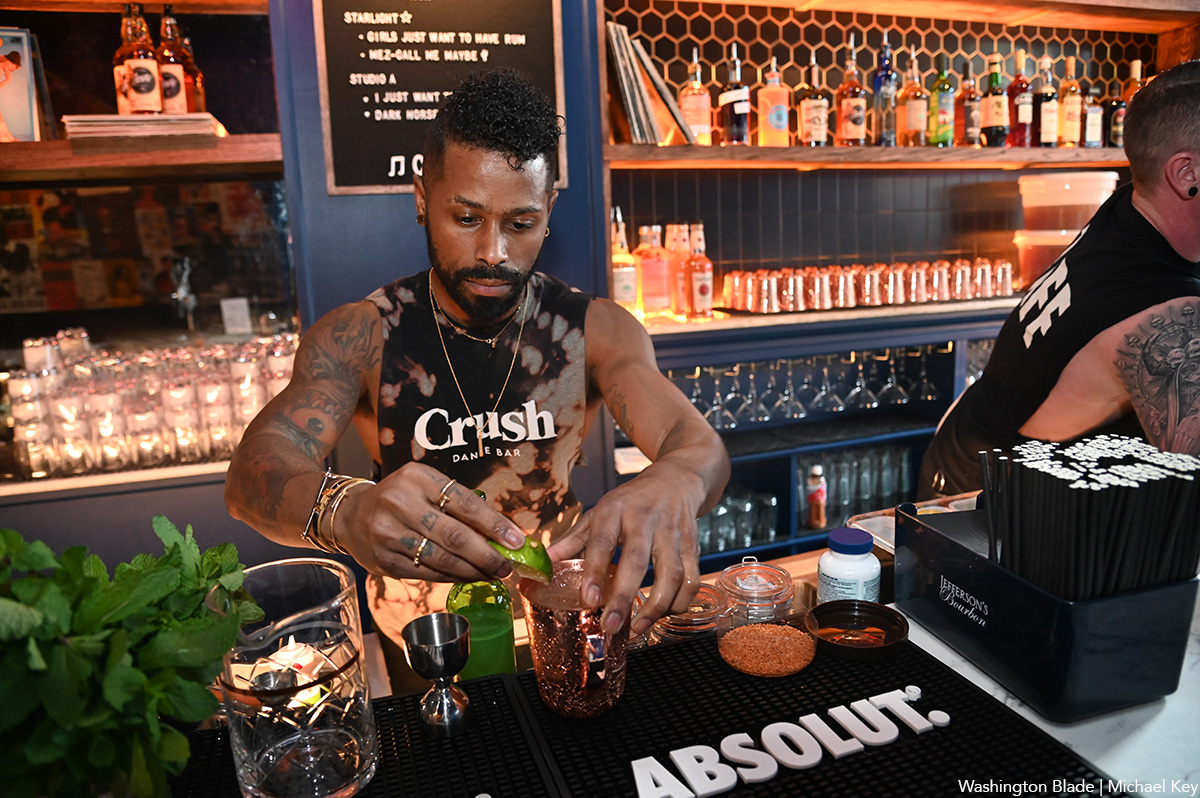
The new LGBTQ venue Crush held a party for friends, family and close supporters on Tuesday. For more information on future events at Crush, go to their Instagram page @crushbardc.
(Washington Blade photos by Michael Key)
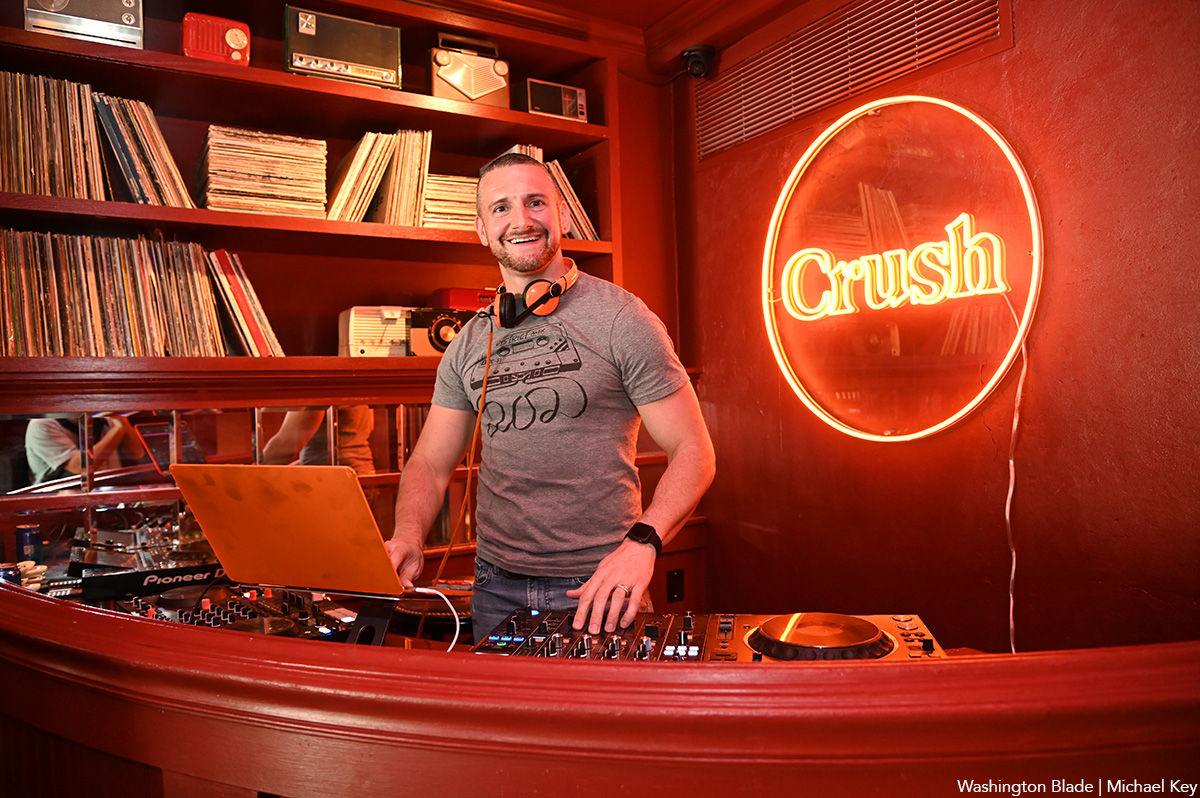
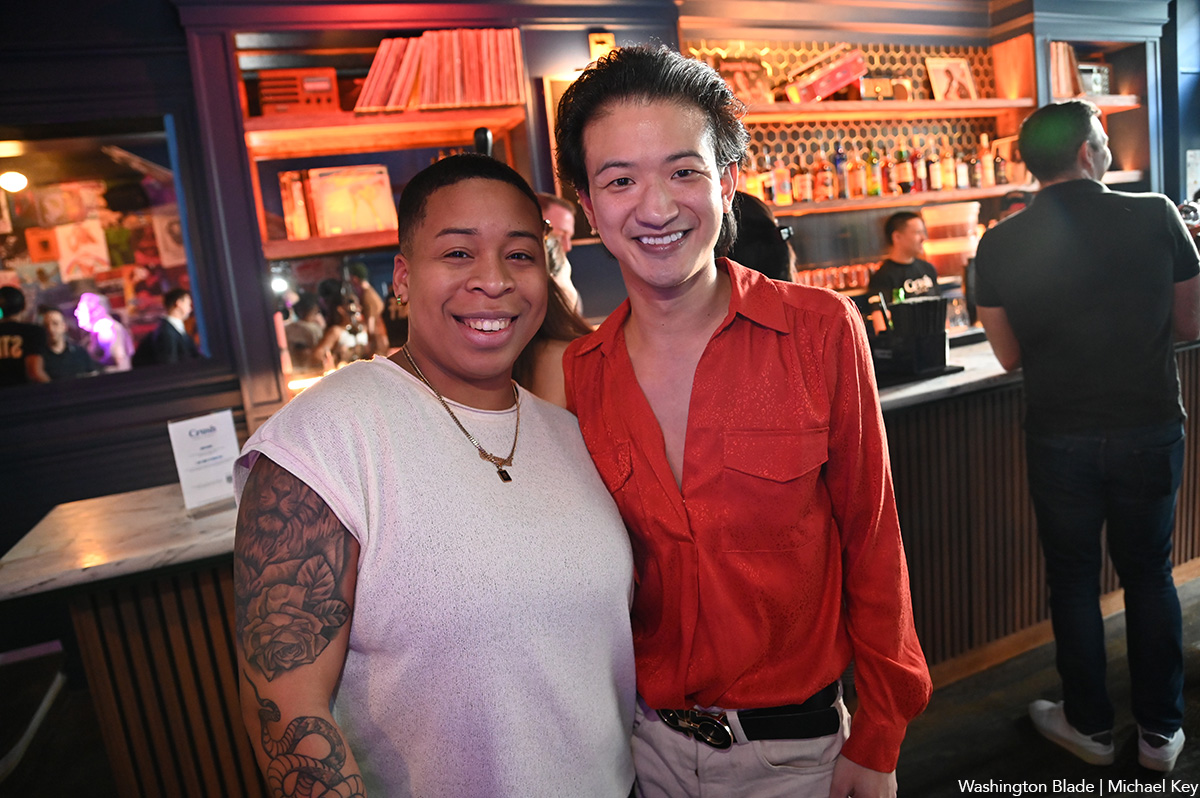
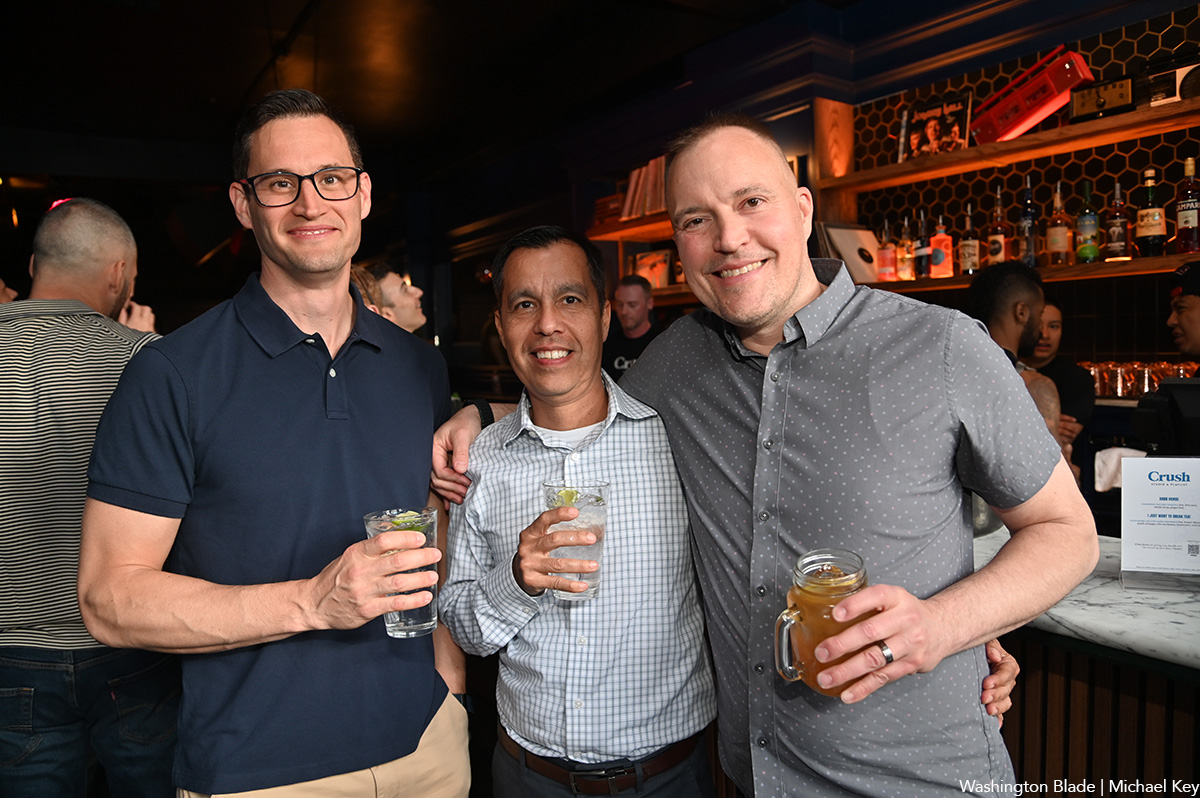
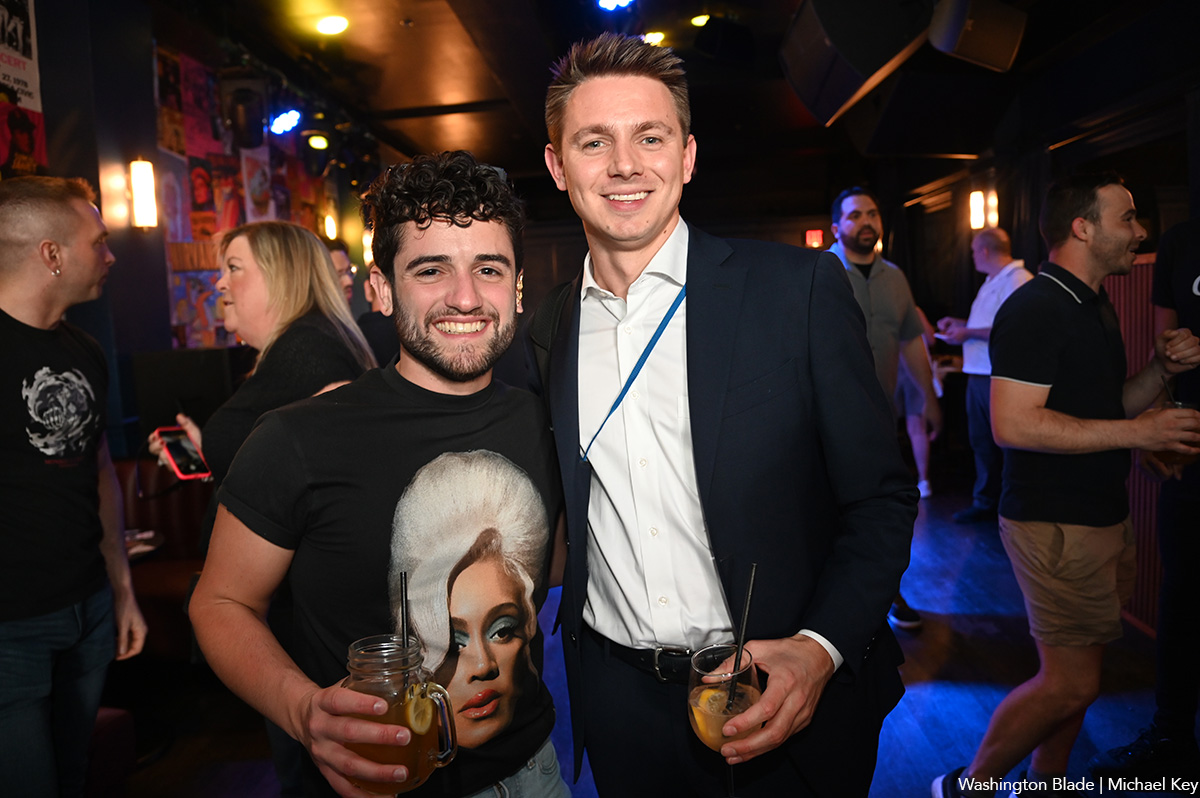
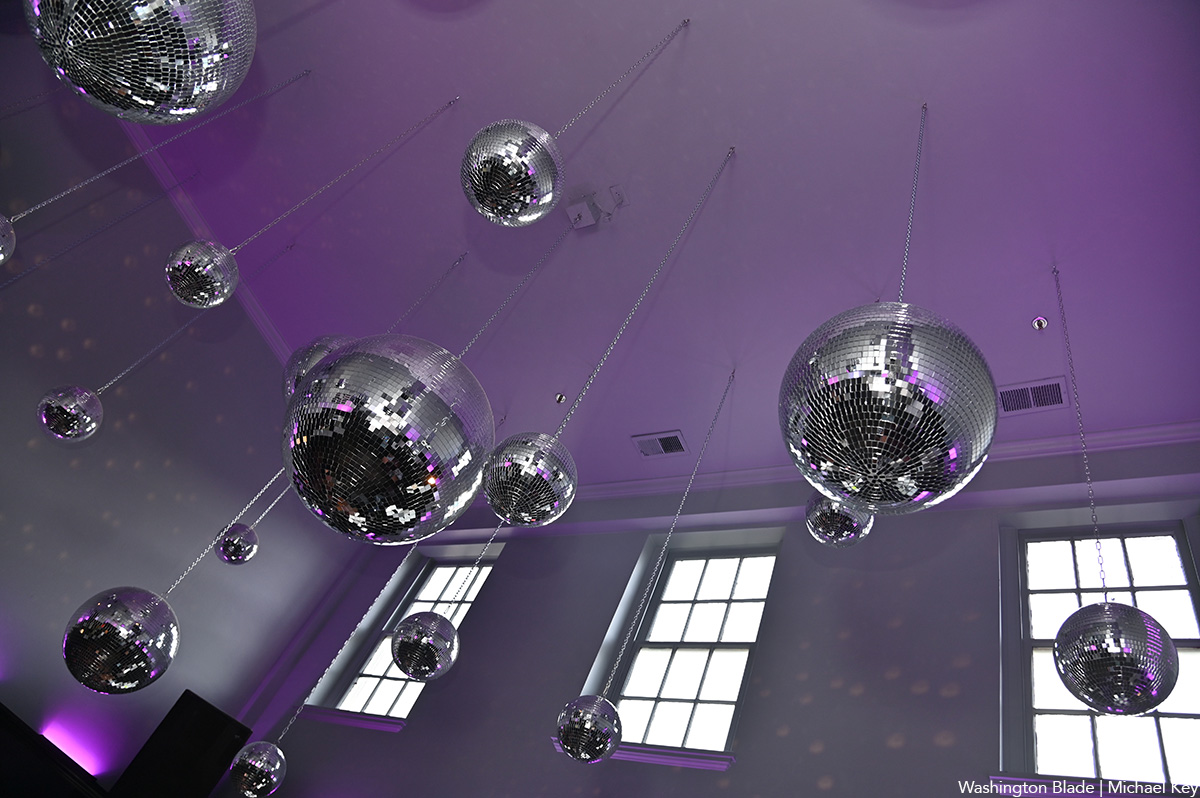
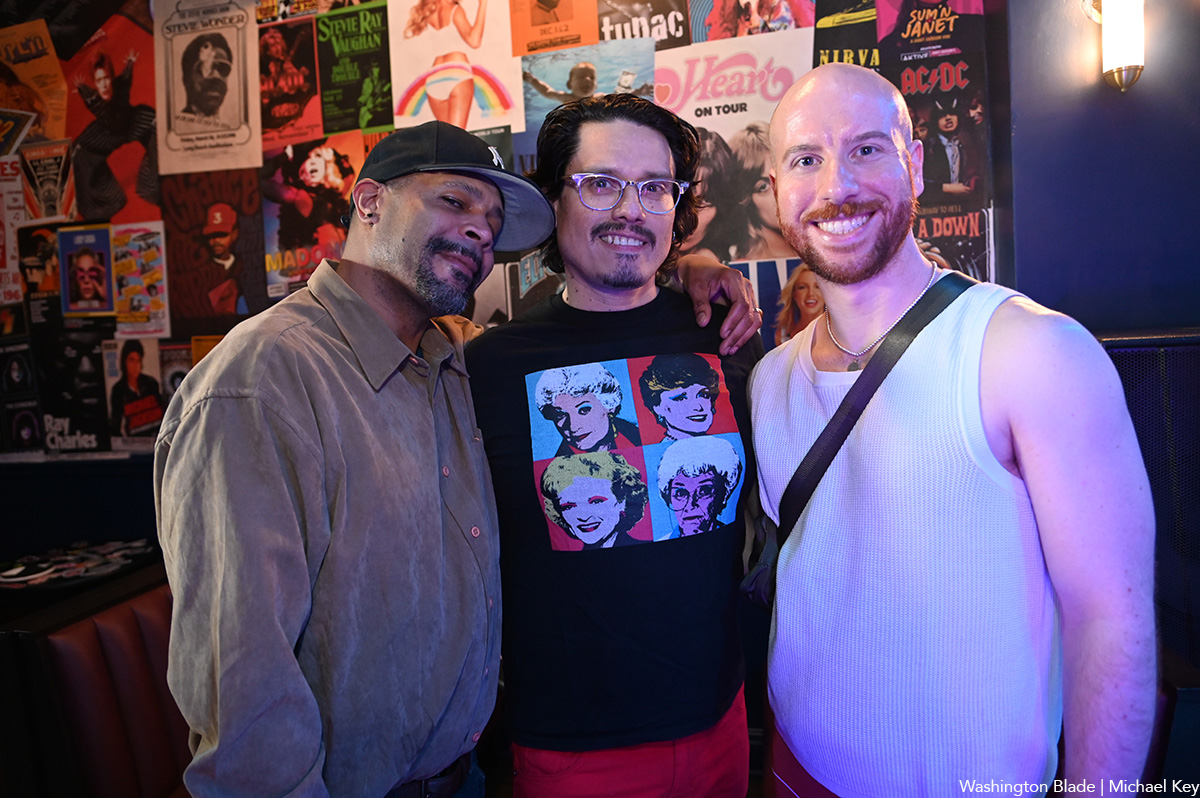
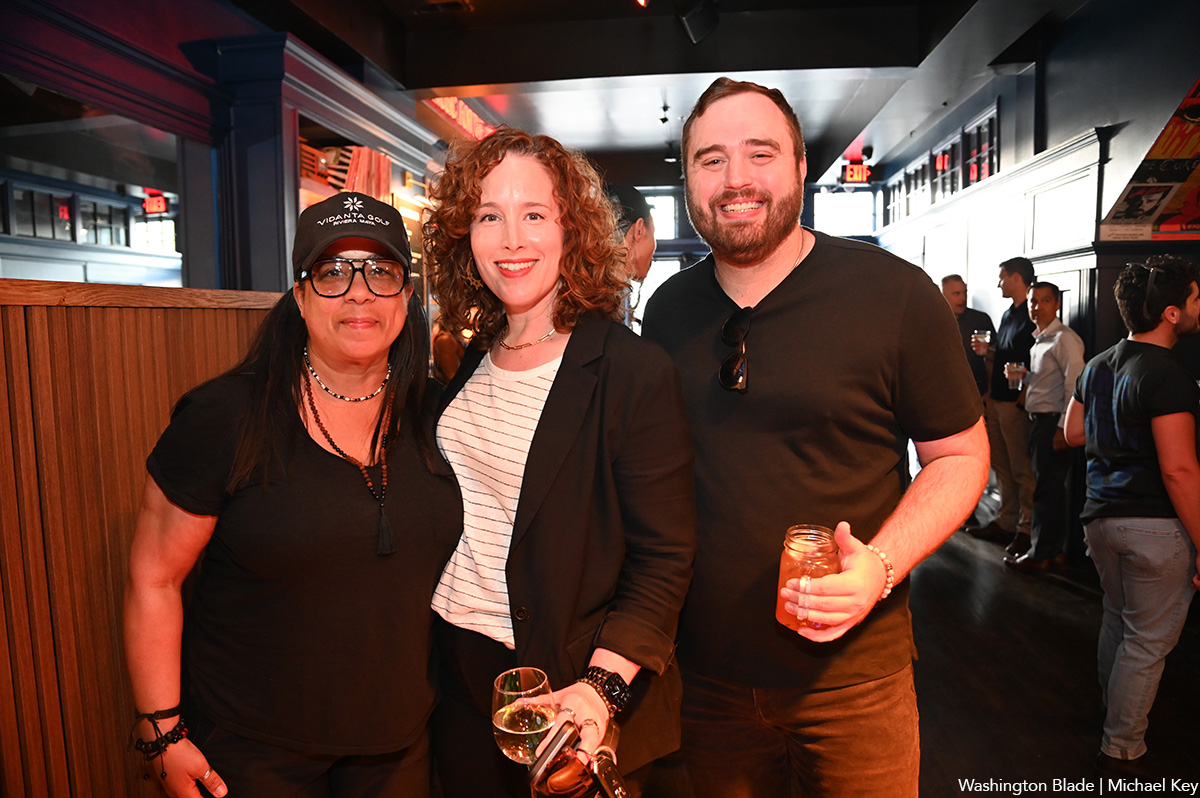
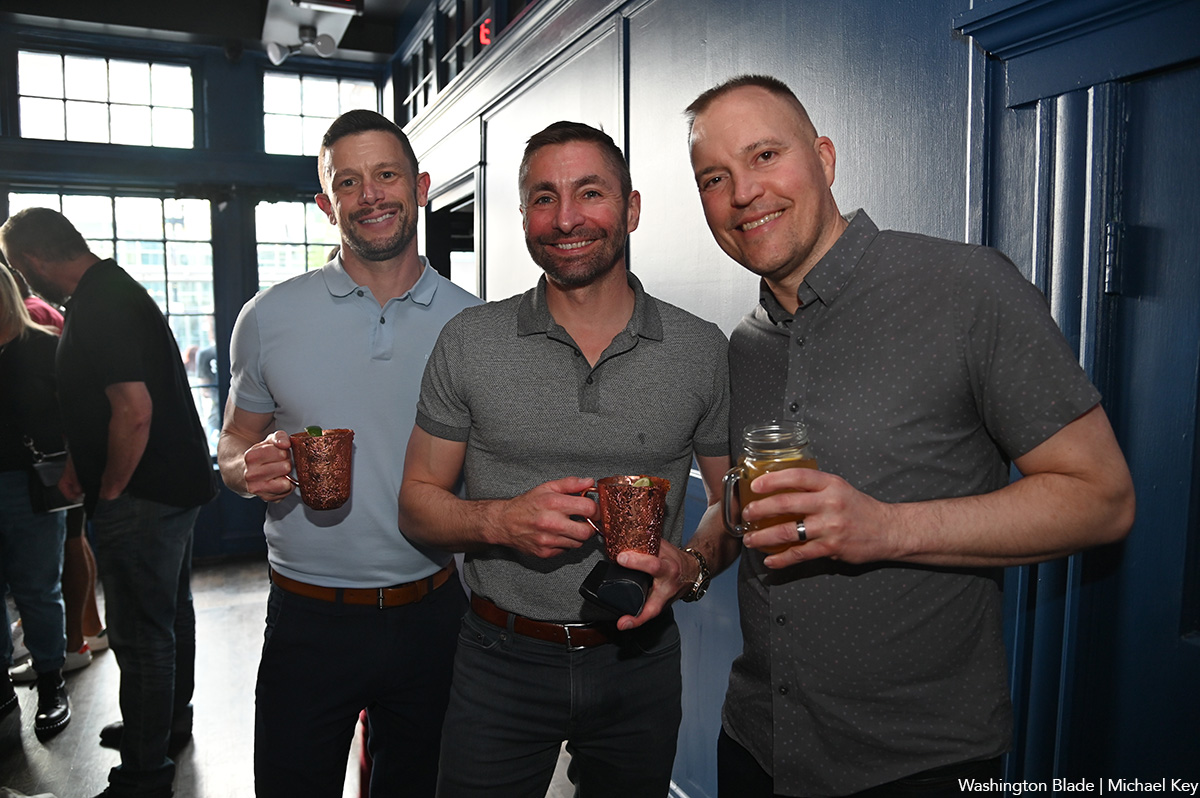
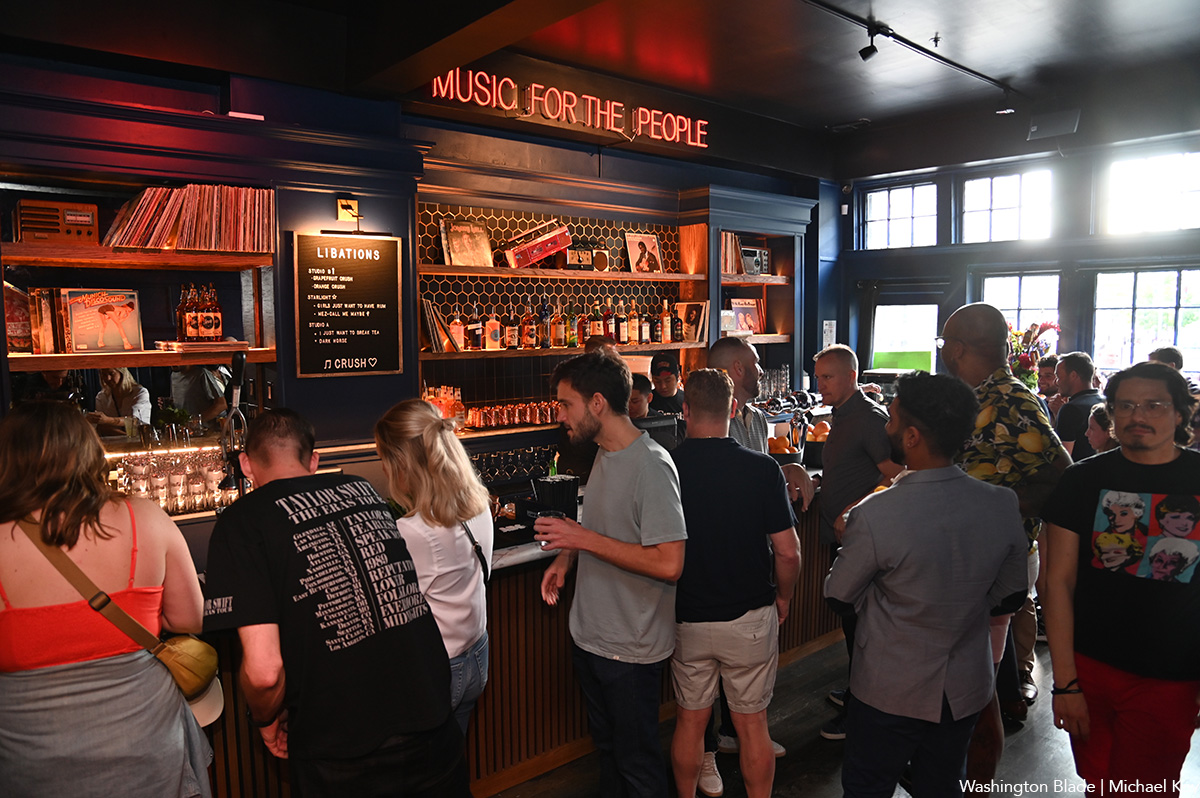
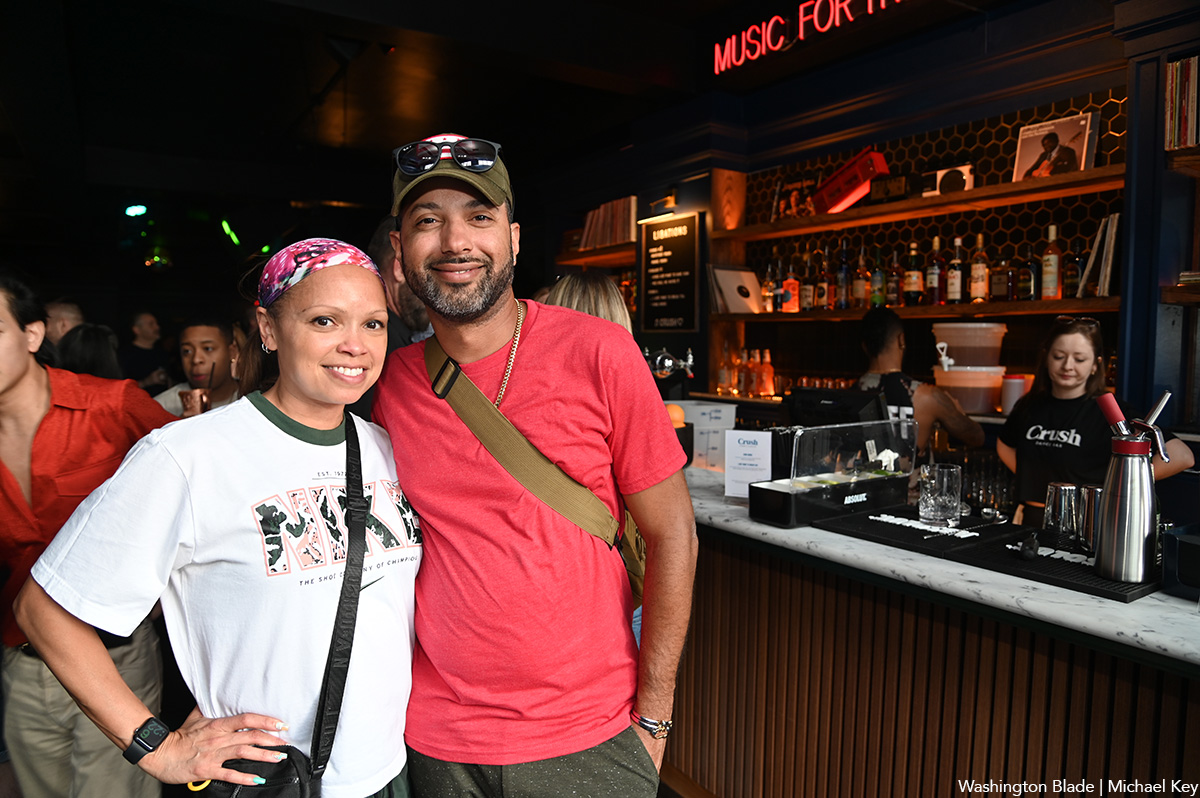
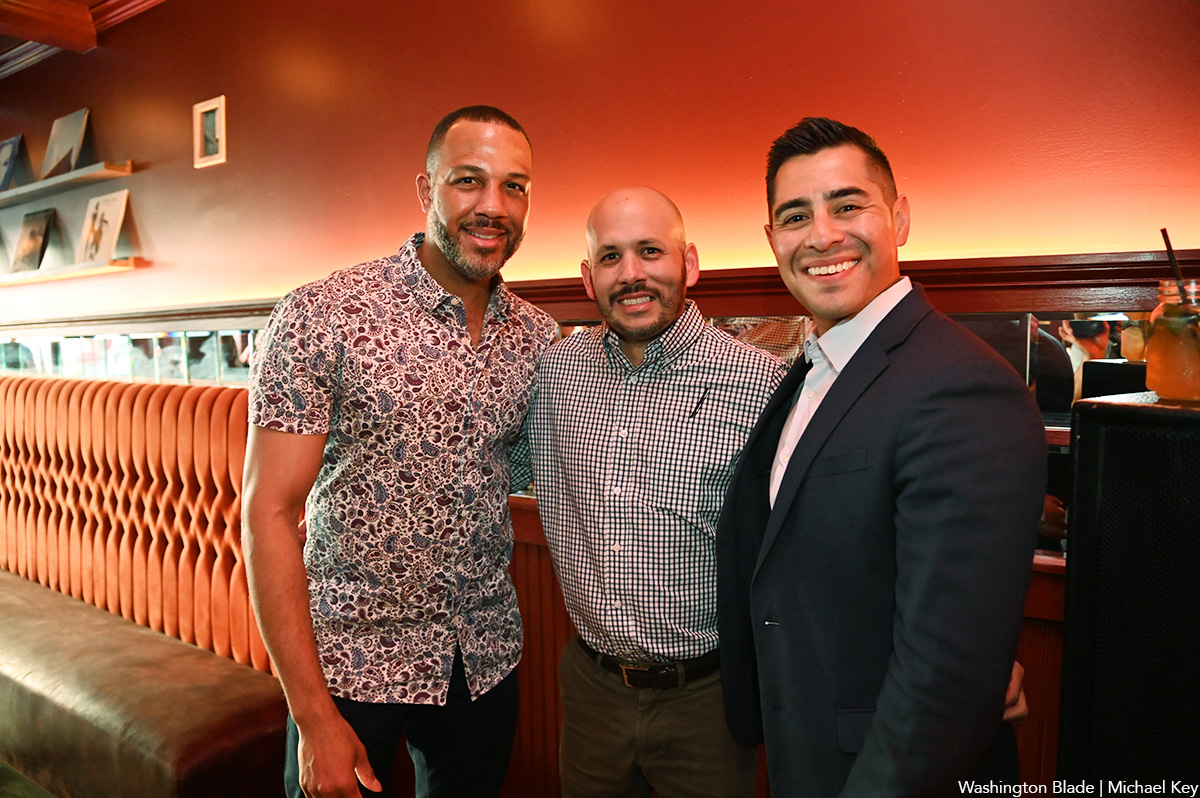
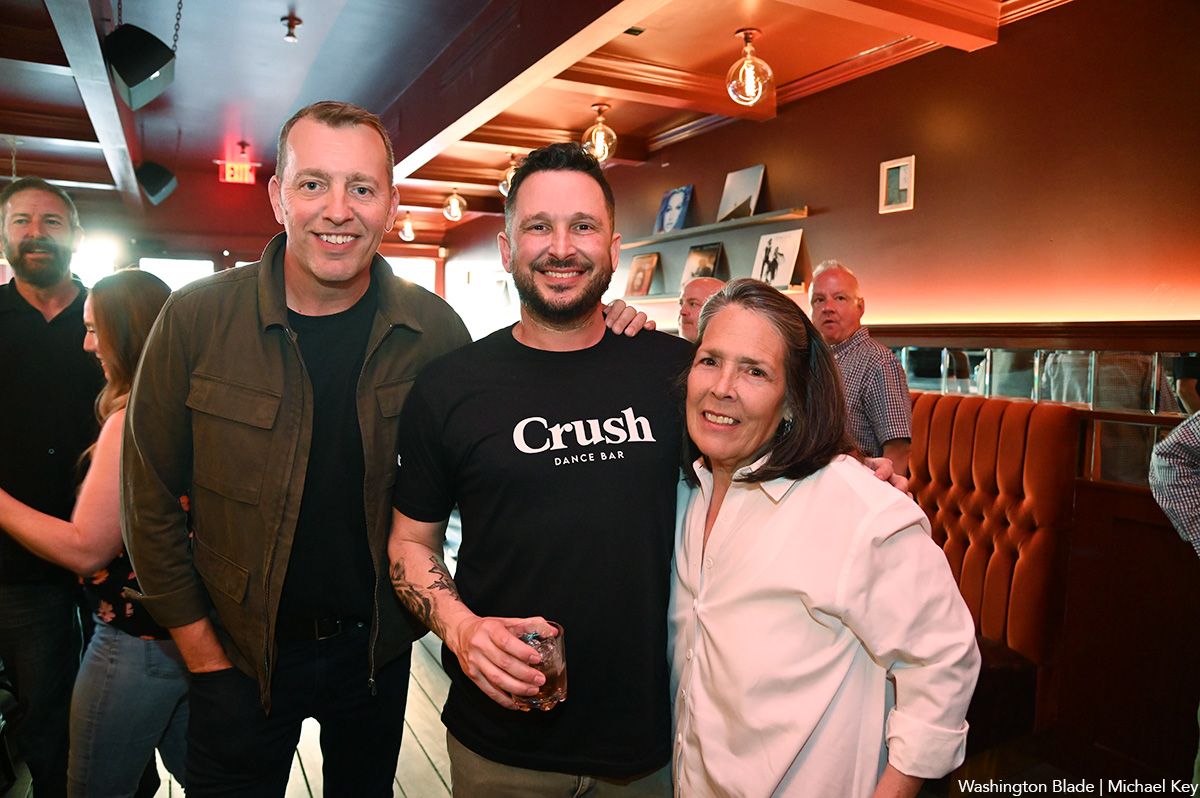
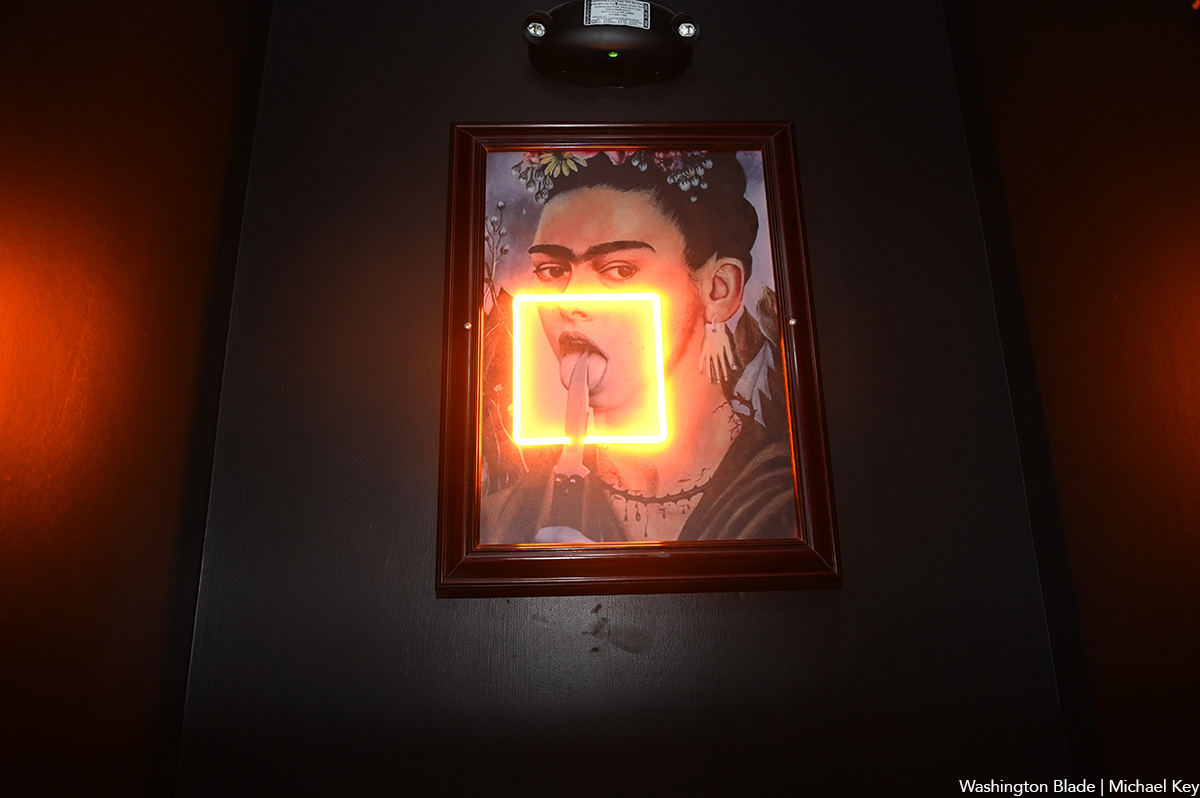
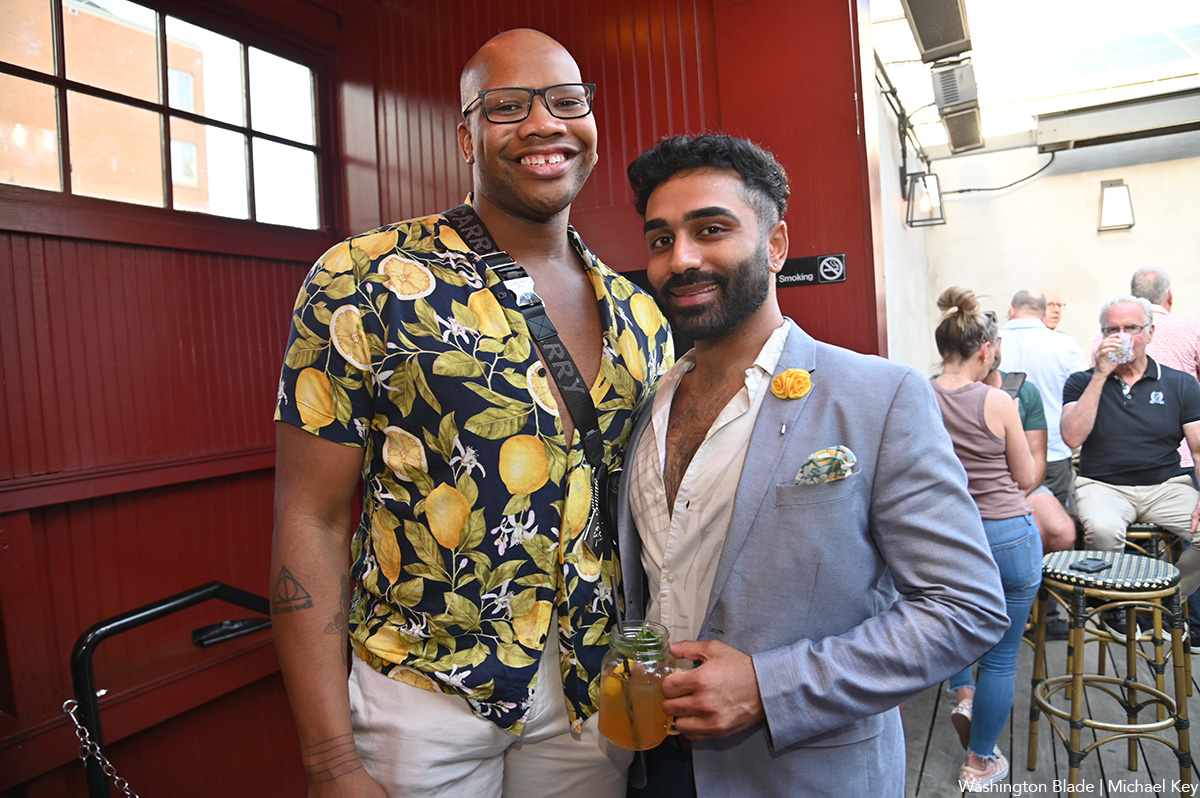
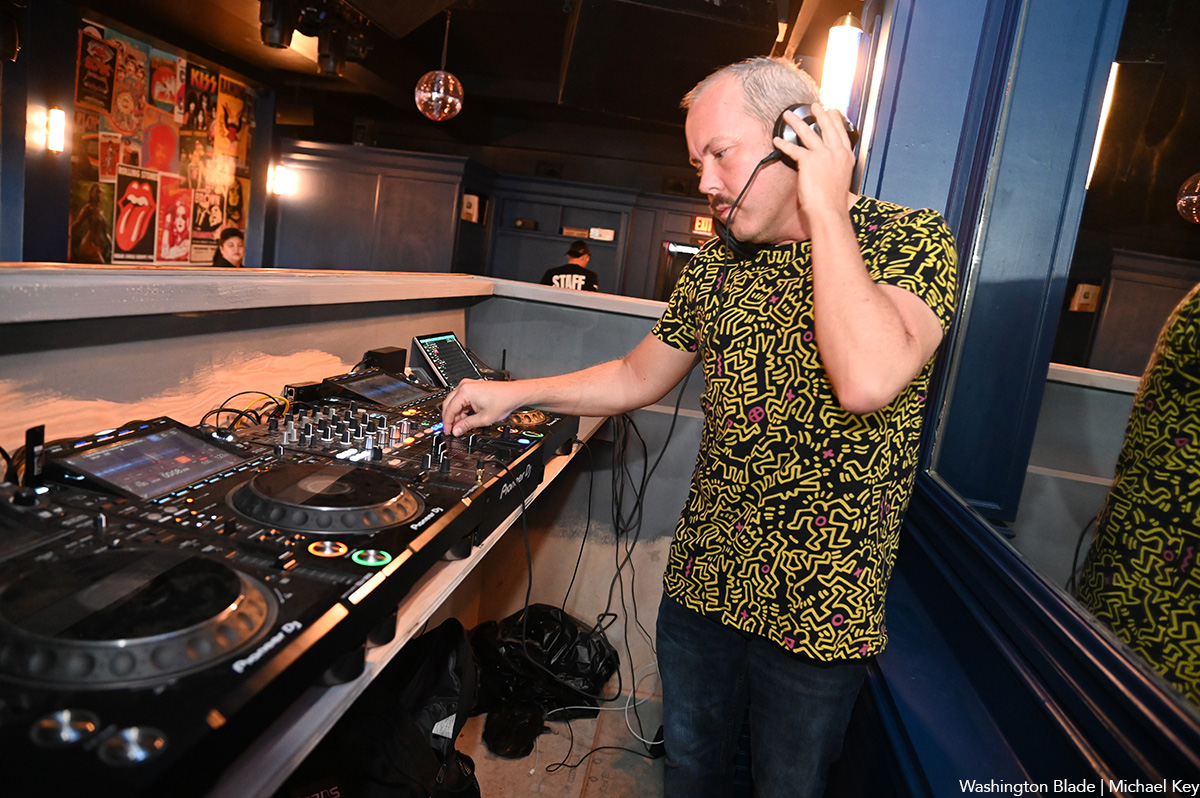
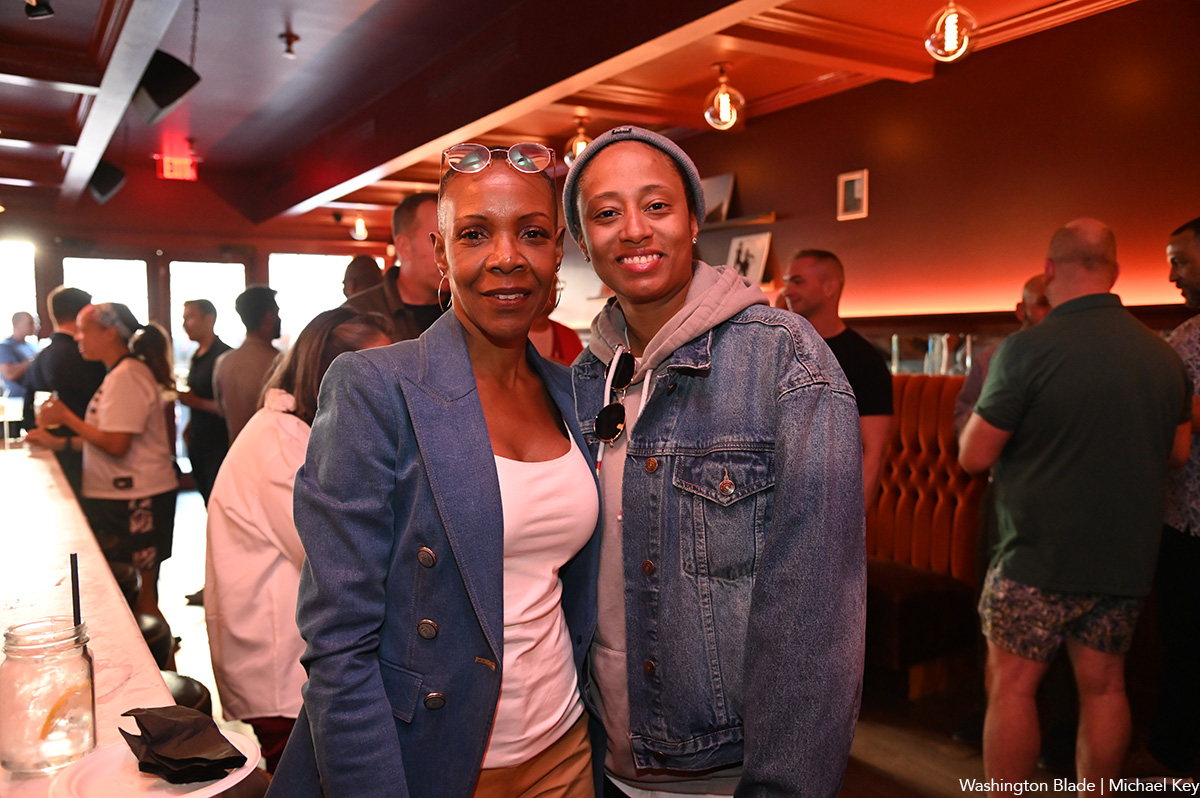
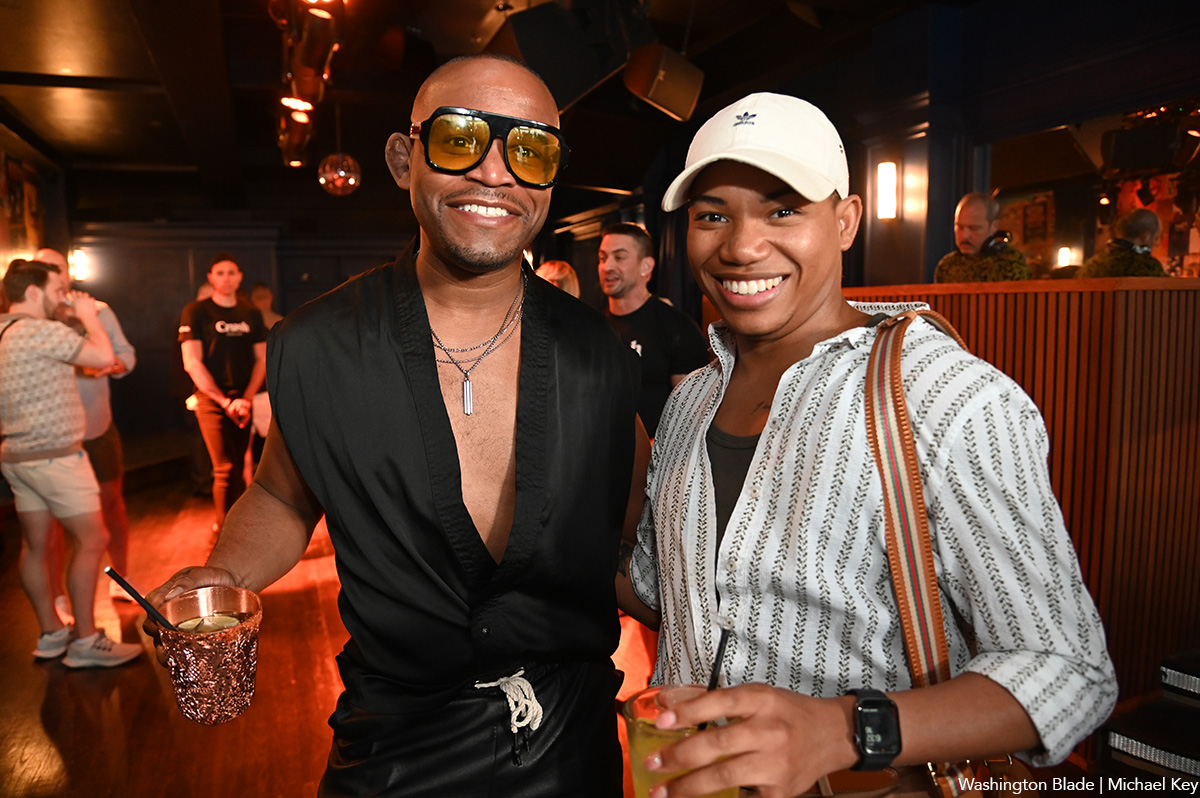
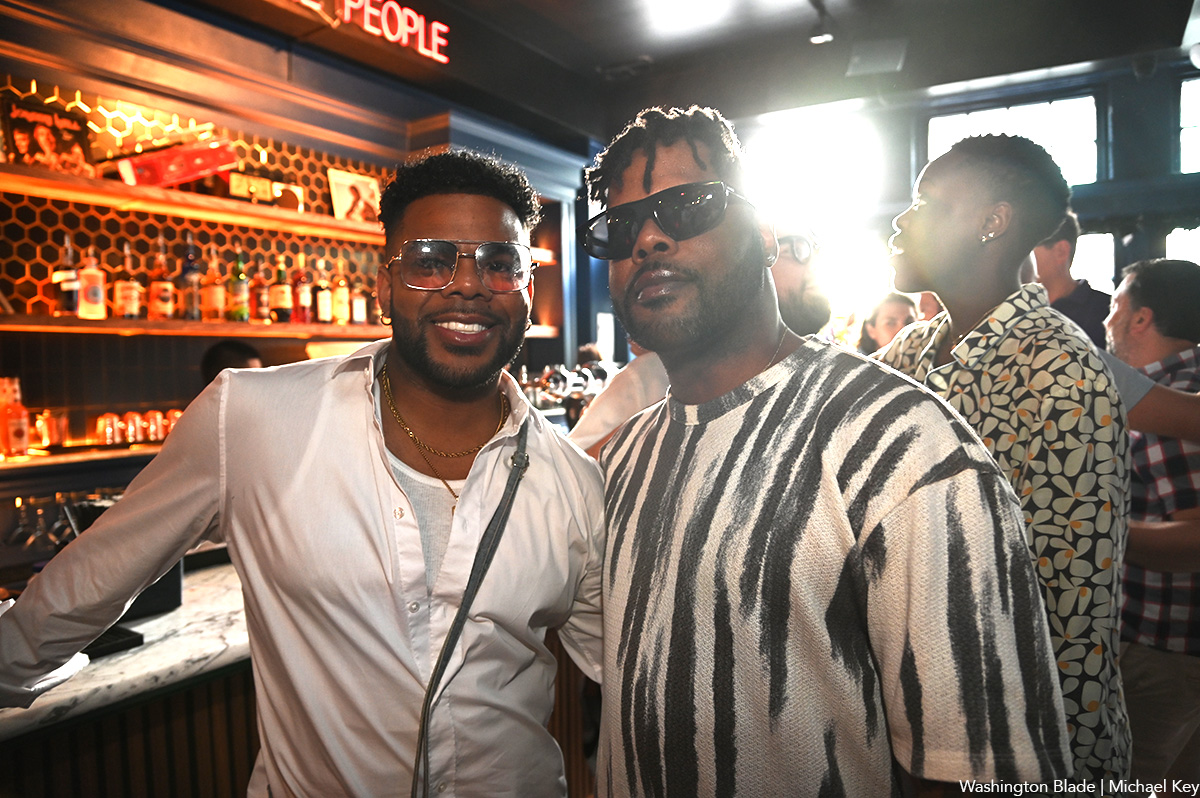
a&e features
What to expect at the 2024 National Cannabis Festival
Wu-Tang Clan to perform; policy discussions also planned
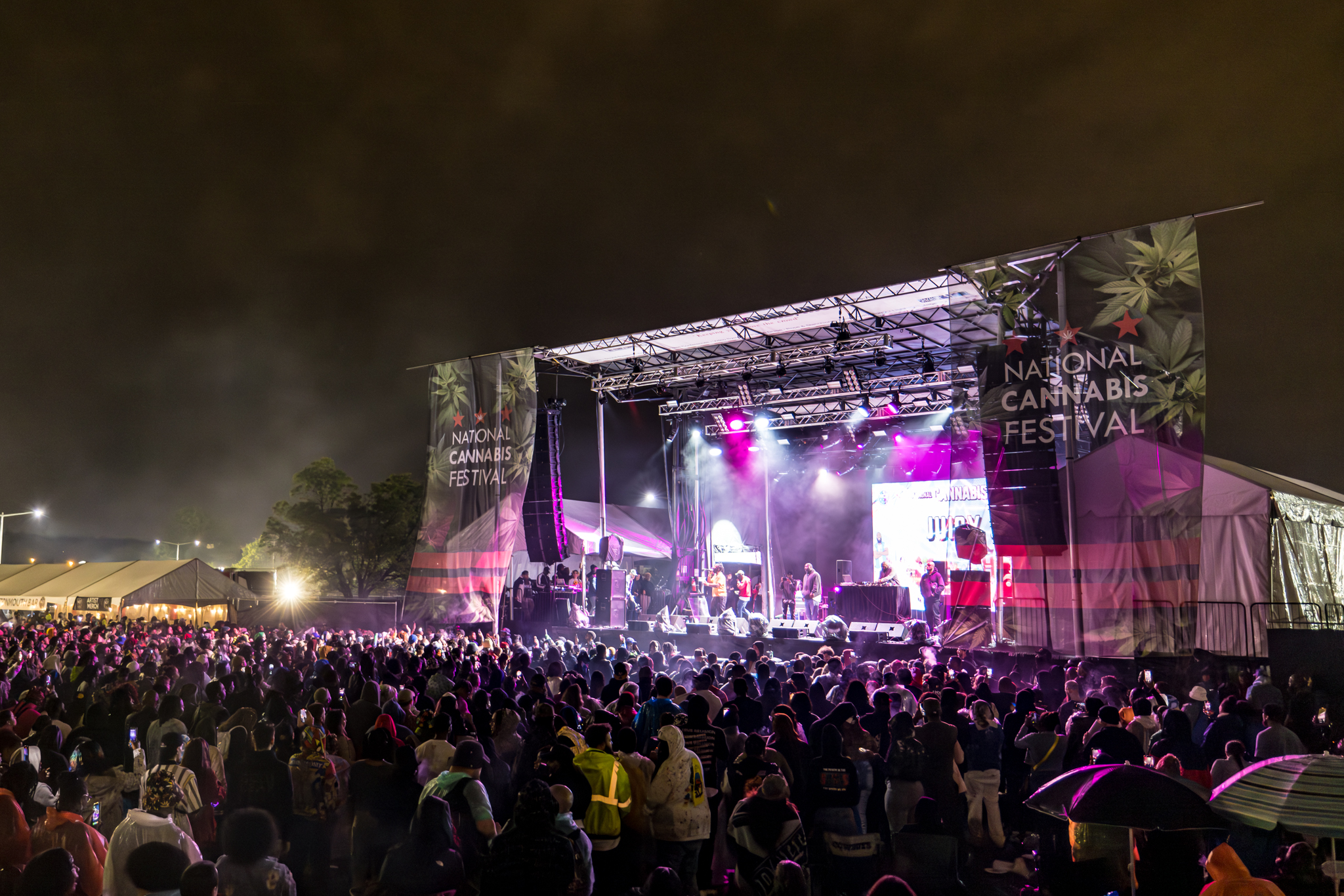
(Editor’s note: Tickets are still available for the National Cannabis Festival, with prices starting at $55 for one-day general admission on Friday through $190 for a two-day pass with early-entry access. The Washington Blade, one of the event’s sponsors, will host a LGBTQIA+ Lounge and moderate a panel discussion on Saturday with the Mayor’s Office of LGBTQ Affairs.)
With two full days of events and programs along with performances by Wu-Tang Clan, Redman, and Thundercat, the 2024 National Cannabis Festival will be bigger than ever this year.
Leading up to the festivities on Friday and Saturday at Washington, D.C.’s RFK Stadium are plenty of can’t-miss experiences planned for 420 Week, including the National Cannabis Policy Summit and an LGBTQ happy hour hosted by the District’s Black-owned queer bar, Thurst Lounge (both happening on Wednesday).
On Tuesday, the Blade caught up with NCF Founder and Executive Producer Caroline Phillips, principal at The High Street PR & Events, for a discussion about the event’s history and the pivotal political moment for cannabis legalization and drug policy reform both locally and nationally. Phillips also shared her thoughts about the role of LGBTQ activists in these movements and the through-line connecting issues of freedom and bodily autonomy.
After D.C. residents voted to approve Initiative 71 in the fall of 2014, she said, adults were permitted to share cannabis and grow the plant at home, while possession was decriminalized with the hope and expectation that fewer people would be incarcerated.
“When that happened, there was also an influx of really high-priced conferences that promised to connect people to big business opportunities so they could make millions in what they were calling the ‘green rush,'” Phillips said.
“At the time, I was working for Human Rights First,” a nonprofit that was, and is, engaged in “a lot of issues to do with world refugees and immigration in the United States” — so, “it was really interesting to me to see the overlap between drug policy reform and some of these other issues that I was working on,” Phillips said.
“And then it rubbed me a little bit the wrong way to hear about the ‘green rush’ before we’d heard about criminal justice reform around cannabis and before we’d heard about people being let out of jail for cannabis offenses.”
“As my interests grew, I realized that there was really a need for this conversation to happen in a larger way that allowed the larger community, the broader community, to learn about not just cannabis legalization, but to understand how it connects to our criminal justice system, to understand how it can really stimulate and benefit our economy, and to understand how it can become a wellness tool for so many people,” Phillips said.
“On top of all of that, as a minority in the cannabis space, it was important to me that this event and my work in the cannabis industry really amplified how we could create space for Black and Brown people to be stakeholders in this economy in a meaningful way.”
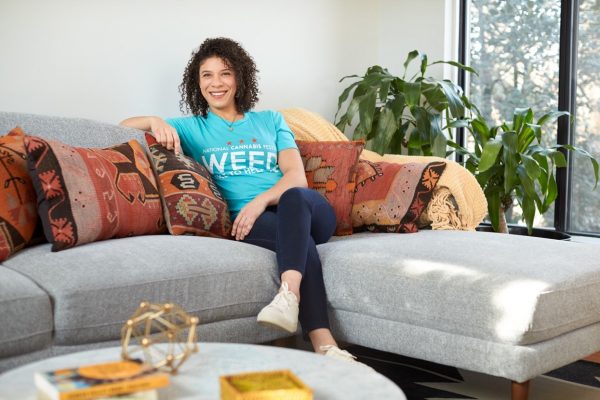
“Since I was already working in event production, I decided to use those skills and apply them to creating a cannabis event,” she said. “And in order to create an event that I thought could really give back to our community with ticket prices low enough for people to actually be able to attend, I thought a large-scale event would be good — and thus was born the cannabis festival.”
D.C. to see more regulated cannabis businesses ‘very soon’
Phillips said she believes decriminalization in D.C. has decreased the number of cannabis-related arrests in the city, but she noted arrests have, nevertheless, continued to disproportionately impact Black and Brown people.
“We’re at a really interesting crossroads for our city and for our cannabis community,” she said. In the eight years since Initiative 71 was passed, “We’ve had our licensed regulated cannabis dispensaries and cultivators who’ve been existing in a very red tape-heavy environment, a very tax heavy environment, and then we have the unregulated cannabis cultivators and cannabis dispensaries in the city” who operate via a “loophole” in the law “that allows the sharing of cannabis between adults who are over the age of 21.”
Many of the purveyors in the latter group, Phillips said, “are looking at trying to get into the legal space; so they’re trying to become regulated businesses in Washington, D.C.”
She noted the city will be “releasing 30 or so licenses in the next couple of weeks, and those stores should be coming online very soon” which will mean “you’ll be seeing a lot more of the regulated stores popping up in neighborhoods and hopefully a lot more opportunity for folks that are interested in leaving the unregulated space to be able to join the regulated marketplace.”
National push for de-scheduling cannabis
Signaling the political momentum for reforming cannabis and criminal justice laws, Wednesday’s Policy Summit will feature U.S. Sens. Raphael Warnock (D-Ga.), Jeff Merkley (D-Ore.), Elizabeth Warren (D-Mass.), and Chuck Schumer (D-N.Y.), the Senate majority leader.
Also representing Capitol Hill at the Summit will be U.S. Congresswoman Eleanor Holmes Norton (D-D.C.) and U.S. Reps. Earl Blumenauer (D-Ore.) and Barbara Lee (D-Calif.) — who will be receiving the Supernova Women Cannabis Champion Lifetime Achievement Award — along with an aide to U.S. Rep. David Joyce (R-Ohio).
Nationally, Phillips said much of the conversation around cannabis concerns de-scheduling. Even though 40 states and D.C. have legalized the drug for recreational and/or medical use, marijuana has been classified as a Schedule I substance since the Controlled Substances Act was passed in 1971, which means it carries the heftiest restrictions on, and penalties for, its possession, sale, distribution, and cultivation.
The U.S. Department of Health and Human Services formally requested the drug be reclassified as a Schedule III substance in August, which inaugurated an ongoing review, and in January a group of 12 Senate Democrats sent a letter to the Biden-Harris administration’s Drug Enforcement Administration urging the agency to de-schedule cannabis altogether.
Along with the Summit, Phillips noted that “a large contingent of advocates will be coming to Washington, D.C. this week to host a vigil at the White House and to be at the festival educating people” about these issues. She said NCF is working with the 420 Unity Coalition to push Congress and the Biden-Harris administration to “move straight to de-scheduling cannabis.”
“This would allow folks who have been locked up for cannabis offenses the chance to be released,” she said. “It would also allow medical patients greater access. It would also allow business owners the chance to exist without the specter of the federal government coming in and telling them what they’re doing is wrong and that they’re criminals.”
Phillips added, however, that de-scheduling cannabis will not “suddenly erase” the “generations and generations of systemic racism” in America’s financial institutions, business marketplace, and criminal justice system, nor the consequences that has wrought on Black and Brown communities.
An example of the work that remains, she said, is making sure “that all people are treated fairly by financial institutions so that they can get the funding for their businesses” to, hopefully, create not just another industry, but “really a better industry” that from the outset is focused on “equity” and “access.”
Policy wonks should be sure to visit the festival, too. “We have a really terrific lineup in our policy pavilion,” Phillips said. “A lot of our heavy hitters from our advocacy committee will be presenting programming.”
“On Saturday there is a really strong federal marijuana reform panel that is being led by Maritza Perez Medina from the Drug Policy Alliance,” she said. “So that’s going to be a terrific discussion” that will also feature “representation from the Veterans Cannabis Coalition.”
“We also have a really interesting talk being led by the Law Enforcement Action Partnership about conservatives, cops, and cannabis,” Phillips added.
Cannabis and the LGBTQ community
“I think what’s so interesting about LGBTQIA+ culture and the cannabis community are the parallels that we’ve seen in the movements towards legalization,” Phillips said.
The fight for LGBTQ rights over the years has often involved centering personal stories and personal experiences, she said. “And that really, I think, began to resonate, the more that we talked about it openly in society; the more it was something that we started to see on television; the more it became a topic in youth development and making sure that we’re raising healthy children.”
Likewise, Phillips said, “we’ve seen cannabis become more of a conversation in mainstream culture. We’ve heard the stories of people who’ve had veterans in their families that have used cannabis instead of pharmaceuticals, the friends or family members who’ve had cancer that have turned to CBD or THC so they could sleep, so they could eat so they could get some level of relief.”
Stories about cannabis have also included accounts of folks who were “arrested when they were young” or “the family member who’s still locked up,” she said, just as stories about LGBTQ people have often involved unjust and unnecessary suffering.
Not only are there similarities in the socio-political struggles, Phillips said, but LGBTQ people have played a central role pushing for cannabis legalization and, in fact, in ushering in the movement by “advocating for HIV patients in California to be able to access cannabis’s medicine.”
As a result of the queer community’s involvement, she said, “the foundation of cannabis legalization is truly patient access and criminal justice reform.”
“LGBTQIA+ advocates and cannabis advocates have managed to rein in support of the majority of Americans for the issues that they find important,” Phillips said, even if, unfortunately, other movements for bodily autonomy like those concerning issues of reproductive justice “don’t see that same support.”
-

 Africa3 days ago
Africa3 days agoCongolese lawmaker introduces anti-homosexuality bill
-

 World3 days ago
World3 days agoOut in the World: LGBTQ news from Europe and Asia
-
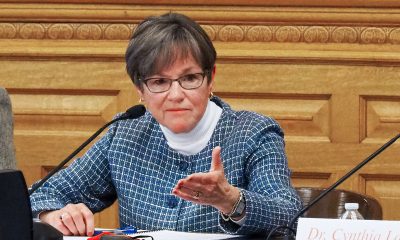
 Kansas5 days ago
Kansas5 days agoKansas governor vetoes ban on health care for transgender youth
-
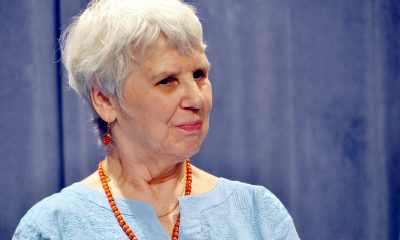
 District of Columbia3 days ago
District of Columbia3 days agoReenactment of first gay rights picket at White House set for April 17

